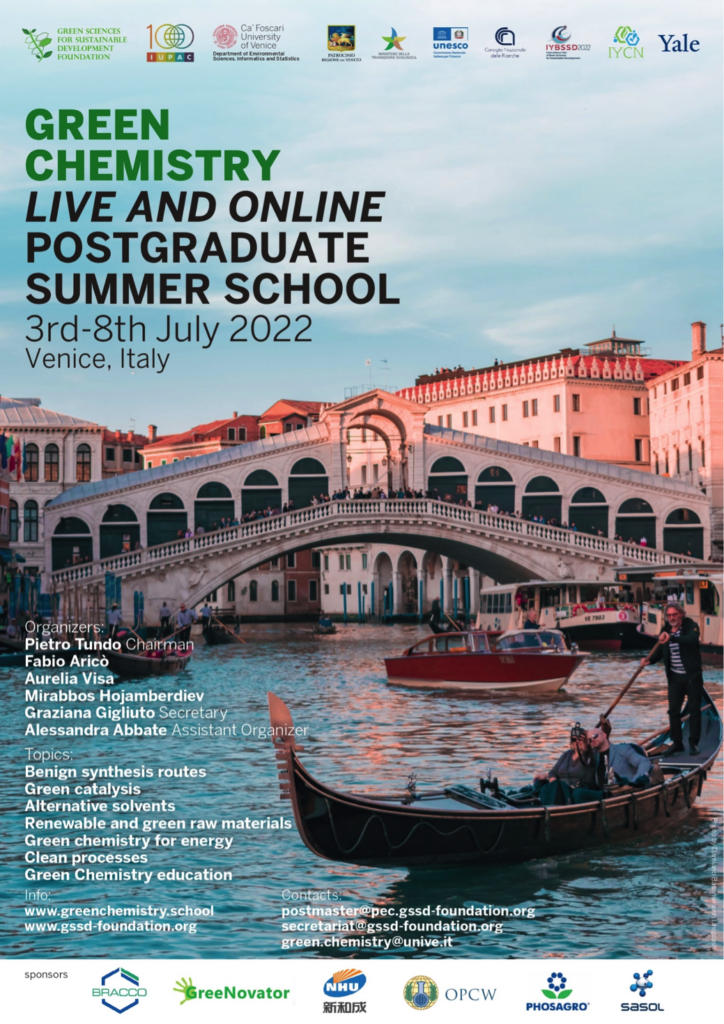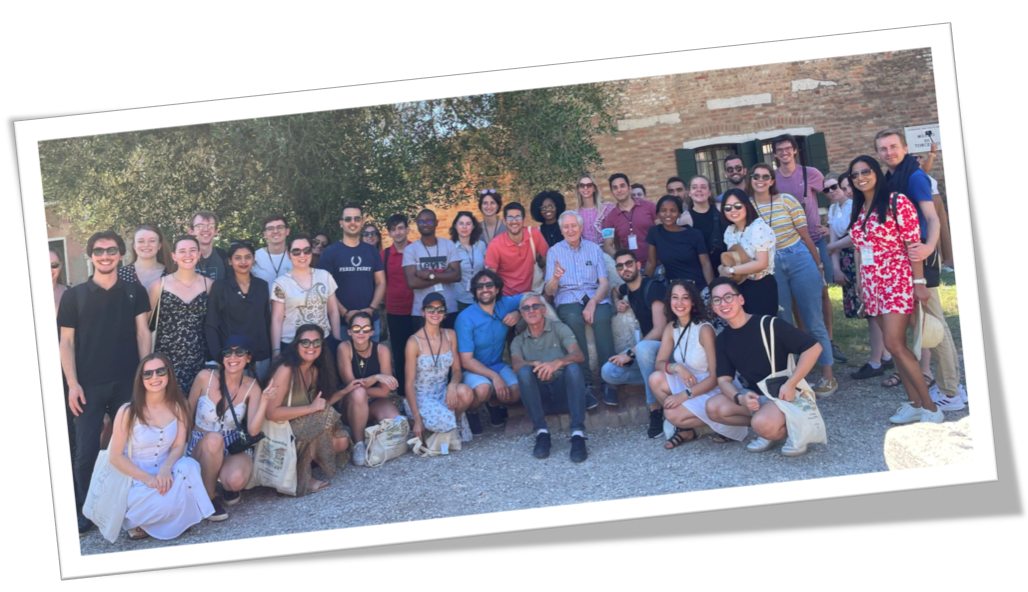DAY 1 > DAY 2 > DAY 3 > DAY 4 > DAY 5
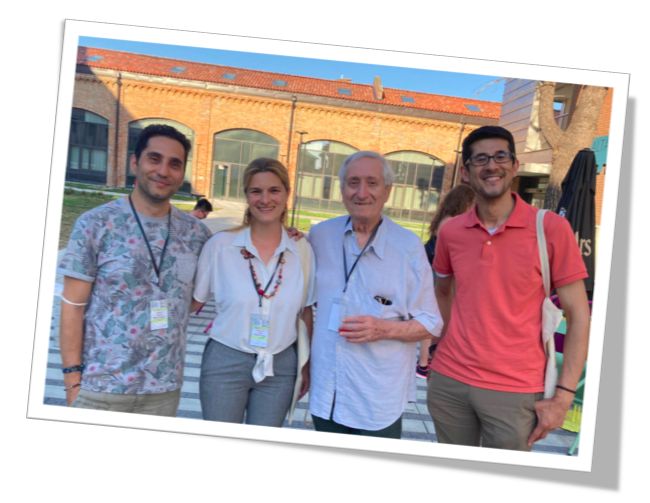
On 4 July 2022, the 14th Green Chemistry Postgraduate Summer School kicked off in Venice, Italy with opening remarks given by Prof. Pietro Tundo (Chair of Green Sciences for Sustainable Development Foundation), Alessandro Agostinetti (Regione Veneto: Direttore Direzione Lavoro), Tiziana Lippiello (Ca’ Foscari University: Rettrice), Prof. Paul Anastas (Director of Yale University’s Center for Green Chemistry and Green Engineering), Prof. Buxing Han (Chair of IUPAC Interdivisional Committee of Green Chemistry for Sustainable Development), Dr. Siroj Loikov (Deputy CEO of PhosAgro), Ten. Col. Andrea Gloria (National Authority for the implementation of the Chemical Weapons Convention, Disarmament, arms control and non-proliferation Office, Ministero Affari Esteri), and Prof. Natalia Tarasova (Director of the Institute of Chemistry and Problems of Sustainable Development, Mendeleev University of Chemical Technology of Russia) highlighting the successes and importance of the Summer School. During the Opening Ceremony, the Summer School also paid a tribute to Janet Scott, who made a significant contribution to the development of green chemistry and left us too early.
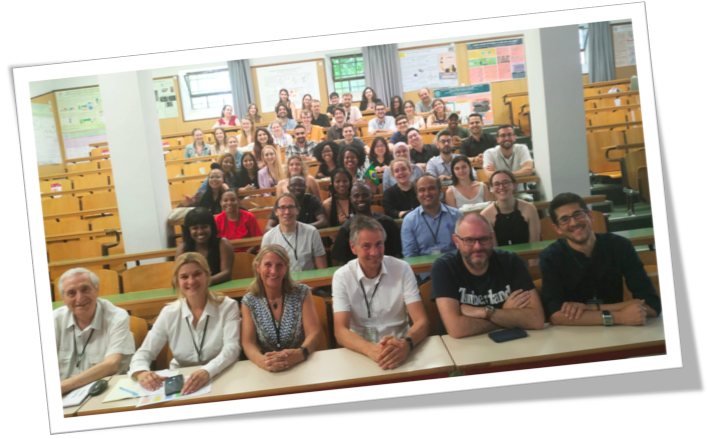
DAY 1
On Day 1, Prof. Krzysztof Matyjaszewski from Carnegie Mellon University, United States, is most well-known for his extraordinary work on developing atom transfer radical polymerization (ATRP) and other controlled radical and ionic polymerization techniques to synthesize various well-defined polymers with precisely controlled molecular architecture with designed shape, composition and functionality. He delivered an insightful lecture on developing various techniques for the regeneration of the catalytic systems, including green chemical reagents.
Prof. Burkhard König from the University of Regensburg, Germany, delivered a fascinating lecture on “Using visible light for more sustainable organic synthesis”, which addressed novel green chemistry approaches for the photocatalytic activation of stronger bonds by a visible light photon with small energy, the generation of reactive anions by a visible light photon, and the synthesis of organic semiconductors as a valid alternative for less stable metal complexes and organic dyes and other future challenges.
Prof. Alexei Lapkin from the University of Cambridge, United Kingdom, introduced the development of functional materials for catalysts, adsorbents and reactors, design of multi-functional intensive reactors, modelling of reaction kinetics and integrated processes, linking reaction kinetics with computational fluid dynamics (CFD) and linking process modelling with life cycle assessment (LCA), integration of reactions and separation.
Prof. Jane Wissinger from the University of Minnesota, United States, addressed the important role of Green Chemistry Education training chemists for a sustainable future and achieving the United Nations Sustainable Development Goals.
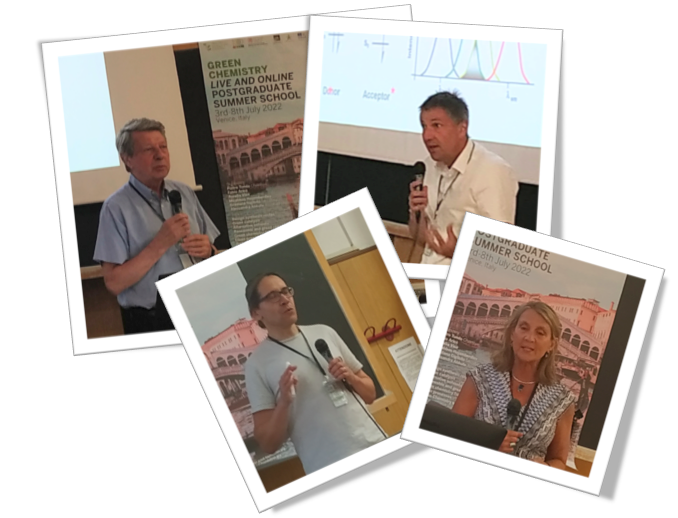
Remotely, Prof. Paul T. Anastas from the Center for Green Chemistry and Green Engineering, Yale University, United States, presented the Periodic Table of the Elements of Green and Sustainable Chemistry using the metaphor of the original Periodic Table first introduced 150 years ago, enabling conceptual frameworks, metrics, legal/economic/policy drivers to advance and empower the transition to a more sustainable world.
The first day of the Summer School finished successfully by 21 online and 20 in-person poster presentations.
DAY 2
The following inspiring lectures were delivered by the distinguished scientists known in the field of Green Chemistry.
Dr. Roman Warchol and Prof. Tundo introduced the capacity building programmes on Green Chemistry in the Organization of Prohibition of Chemical Weapons (OPCW) and Green Sciences for Sustainable Development Foundation, respectively. Professor Buxing Han from the Institute of Chemistry, Chinese Academy of Sciences, China, gave an insightful talk on the use of biomass and CO2 as carbon source to produce fuels and value-added chemicals. Professor Pietro Tundo from Ca’ Foscari University, Italy, delivered an interesting lecture on how dimethyl carbonate complies with Green Chemistry and made a comparison among reaction mechanisms and energy profiles in esters and carbonates. Professor Haoran Li from Zhejiang University, China, demonstrated mechanisms and applications of aerobic oxidation (potential green process) in vitamin industry, including (i) the oxidation of beta-isophoron, 2,3,6-trimethylphenol, acetyl-cholesterol, etc.
Professor Jean-Marie Lehn from the University of Strasbourg, who received the Nobel Prize in Chemistry in 1987, delivered his insightful lecture “Perspectives in Chemistry: Molecular-Supramolecular-Adaptive Chemistry”.
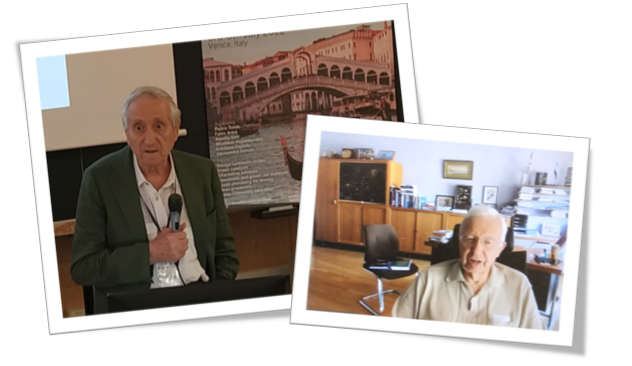
Professor Francesco Trotta from the University of Turin, Italy, shared the results obtained over the last decades on use of renewable resources in polymer chemistry. Prof. Martin Möller from DWI – Leibniz Institute for Interactive Materials, Germany, introduced the innovation potential of bioinspired materials and four major criteria in the biologization of Materials Science. Dr. Aurelia Visa from the Institute of Chemistry “Coriolan Dragulescu”, Romania, introduced the complexity and diversity of metal organic frameworks in structures and green applications.
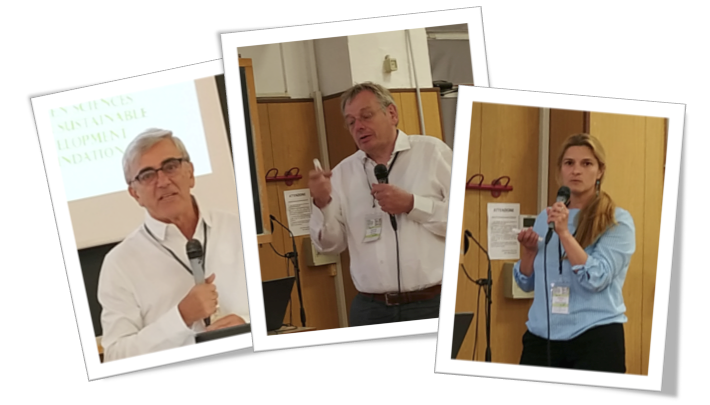
The second day of the Summer School finished successfully by 15 online and 20 in-person poster presentations.
DAY 3
Dr. Evgenia Mescherova from PhosAgro introduced the successes and opportunities of research grants and capacity building programme in Green Chemistry.
The Evaluation Committee selected 4 best poster presentations among 48 in-person poster presentations for the Awards given generously by PhosAgro (Europe’s largest producer of phosphate-based fertilizers and the world’s largest producer of high-grade phosphate rock). The four Awards were given to the two female and two male in-person poster presenters:
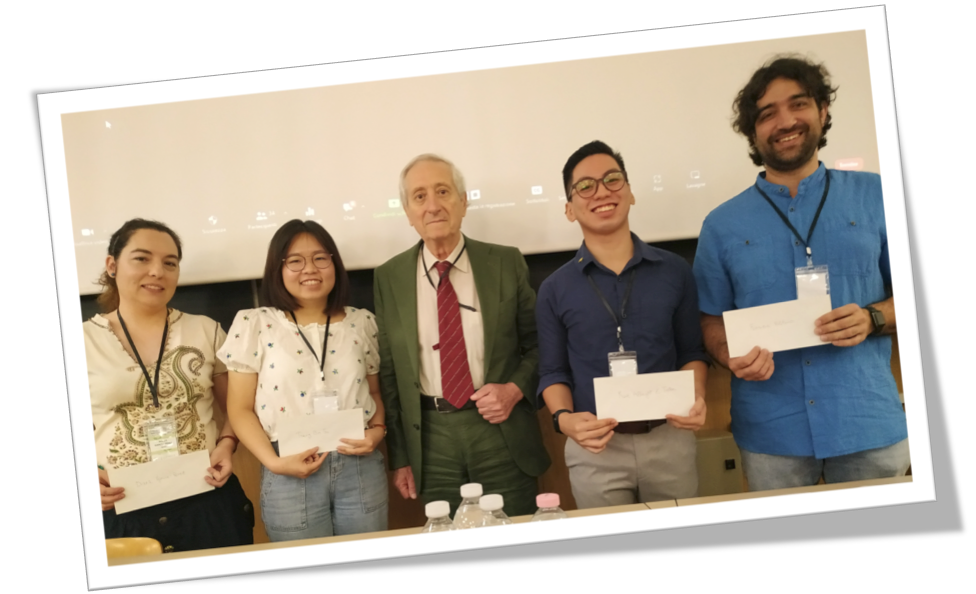
Diana Garcia-Perez from the Instituto de Catálisis y Petroleoquímica, Spain, on “Metal phosphide nanoparticles for the hydrotreatment of methyl laurate to produce green liquid fuels”
Fabrizio Politano from the University of Connecticut, United States and Universidad Nacional de Córdoba, Argentina, on “The versatility of Acetamido-TEMPO in the chemical and electrochemical activated oxidation of alcohols”
Karl Albright Tiston from Chulalongkorn University, Thailand, on “3D Printable Liquid Crystal Elastomers with Light-Induced Shape Transformations
Trang Thi Bui from the University of Antwerp, Belgium, on “Preparation of industrial primary alcohols by a one-pot hydroboration-isomerization process from waste polyolefin pyrolysis oil”
Dr. Barbara Franco from Danieli Centro Metallics, Italy, presented the impacts of greenhouse gas emission, EU initiatives to reduce the carbon dioxide emissions in the atmosphere, and possibilities for green steelmaking with low carbon emission. Dr. Vittorio Esposito from ARPA Puglia, Environment Agency of Apulia, Italy, presented commend-and-control vs pollution prevention in environmental policies for achieving green and sustainable steel production in Italy. Dr. Mirabbos Hojamberdiev from Technische Universität Berlin, Germany, discussed how green hydrogen can be produced from solar water splitting using an emerging class of inorganic materials as visible-light-active photocatalysts. Prof. Oliver Kappe from the University of Graz, Austria, delivered an interesting lecture on the importance of flow chemistry on achieving the sustainable development goals and the use of continuous processing in organic synthesis according to the green chemistry and green engineering principles.
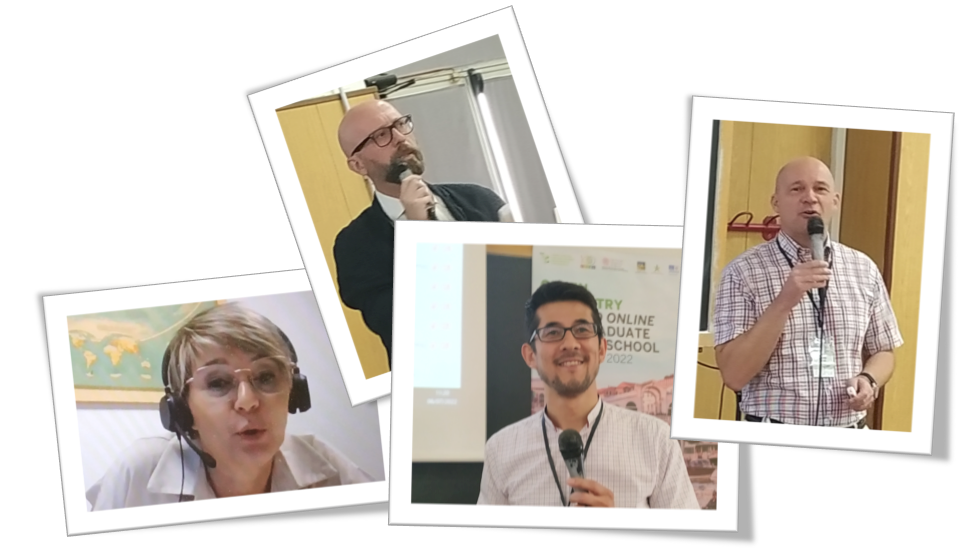
Day 3 of the Summer School was successfully completed with 15 online poster presentations via a ZOOM platform and a guided tour to The Church of Santa Maria Assunta (basilica di Santa Maria Assunta), which is one of the most ancient religious edifices in the Veneto, on the island of Torcello and the fascinating island of Burano.
DAY 4
The morning session of Day 4 was opened with the introduction of the successes and opportunities of the Interdivisional Committee on Green Chemistry for Sustainable Development (ICGCSD) and the International Younger Chemists Network (IYCN) by Prof. Buxing Han (Chair of ICGCSD) and Dr. João Borges (Chair of IYCN), respectively.
Then, five insightful lectures were given in the following session. Namely, Prof. Fabio Aricò from Ca’ Foscari University, Italy, demonstrated the synthesis, functionalization, characterization, and application of bio-based platform chemical and dialkyl carbonates. Prof. Florent Allais from AgroParisTech, France, presented biomass upgrading through the combined use of white biotechnologies, green chemistry and downstream processing for the development and optimization of sustainable industrial processes and high value-added products. Dr. Jonathan Forman from the Pacific Northwest National Laboratory (PNNL), United States, gave a thought-provoking lecture on chemicals of war and peace, arms control, disarmament, non-proliferation and green chemistry. Prof. Konstantinos Triantafyllidis from Aristotle University of Thessaloniki, Greece, delivered an interesting lecture on adding value to biorefinery and pulp industry side-streams: lignin valorization to fuels, chemicals and polymers as lignin is still under-utilized compared to the carbohydrate fractions of biomass. Prof. Natalia Tarasova from Mendeleev University of Chemical Technology of Russia delivered a fascinating lecture on the development of green chemistry within “planetary boundaries”*, a concept introduced by Rockström et al. (Nature 461 (2009) 472–475) and a technogenic impact of the release of man-made chemicals into the environment.
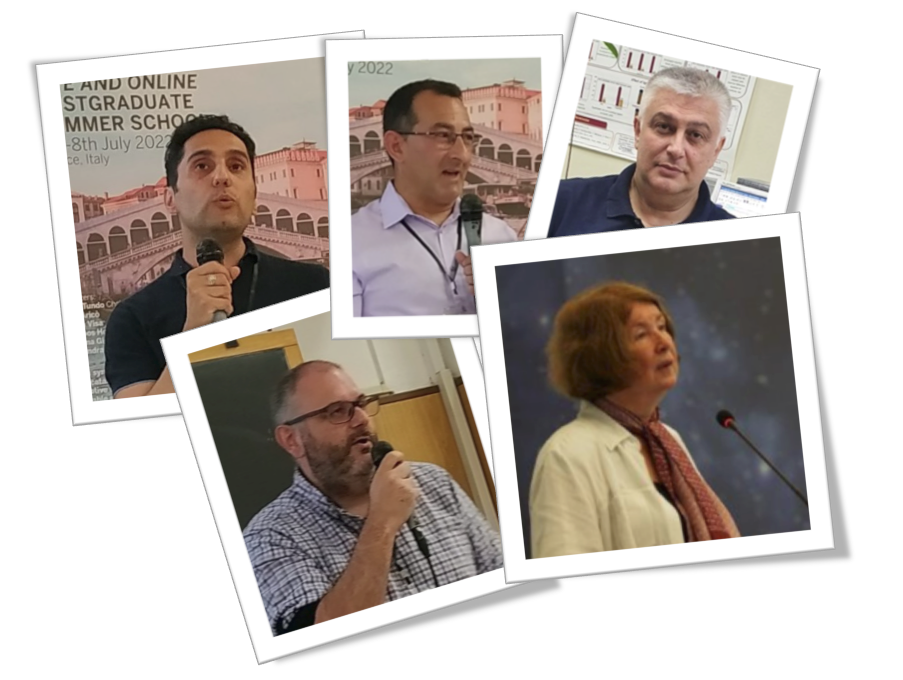
Day 4 ended successfully with three sessions of the online poster presentations on exploitation of renewable resources, health and food safety.
(*explore the Planetary Boundaries Framework at www.planetaryboundaries.kcvs.ca)
DAY 5
On the fifth day of the Green Chemistry Postgraduate Summer School, two insightful in-person and online lectures were respectively delivered by:
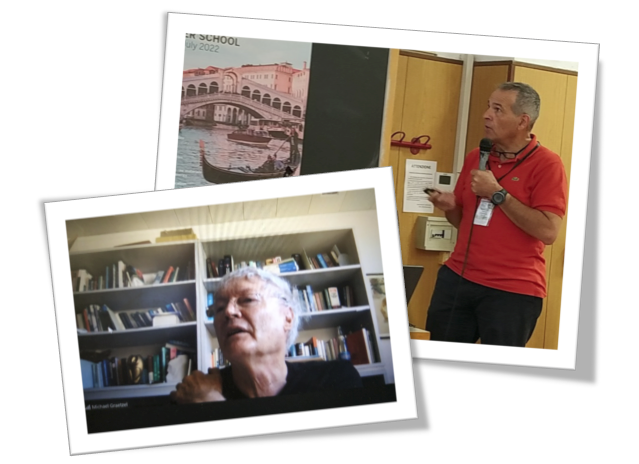
Prof. Carlo Barbante from the University Ca’Foscari of Venice, Italy, on the impact of global warming and its consequences on climate change. He demonstrated the developed mass spectrometry-based advanced analytical methodology for trace and ultra-trace determinations in environmental and biological matrices, chemical imaging analysis, long-term paleoclimate and atmospheric chemistry from ice cores, quaternary climate, heavy metals and organic pollutants in polar and temperate ice and snow, paleofire reconstruction through ice and lake sediment record.
Prof. Michael Grätzel from École Polytechnique Fédérale de Lausanne (EPFL), Switzerland, who is known for the dye-sensitized solar cell “Grätzel cell”, on mesoscopic photosystems that convert sunlight very efficiently to electricity and chemical fuels mimicking natural photosynthesis and new concepts to realize highly efficient generation of hydrogen and reduction of carbon dioxide to ethylene by sunlight using water as electron source.
Then, four PhosAgro Award Winners of the Best In-Person Poster Presentations presented their research works to teachers, online and in-person participants in the following order:
Diana García-Pérez from the Instituto de Catálisis y Petroleoquímica, Spain, on “Metal phosphide nanoparticles for the hydrotreatment of methyl laurate to produce green liquid fuels”
Fabrizio Politano from the University of Connecticut, United States and Universidad Nacional de Córdoba, Argentina, on “The versatility of Acetamido-TEMPO in the chemical and electrochemical activated oxidation of alcohols”
Karl Albright Tiston from Chulalongkorn University, Thailand, on “3D Printable Liquid Crystal Elastomers with Light-Induced Shape Transformations
Trang Thi Bui from the University of Antwerp, Belgium, on “Preparation of industrial primary alcohols by a one-pot hydroboration-isomerization process from waste polyolefin pyrolysis oil”
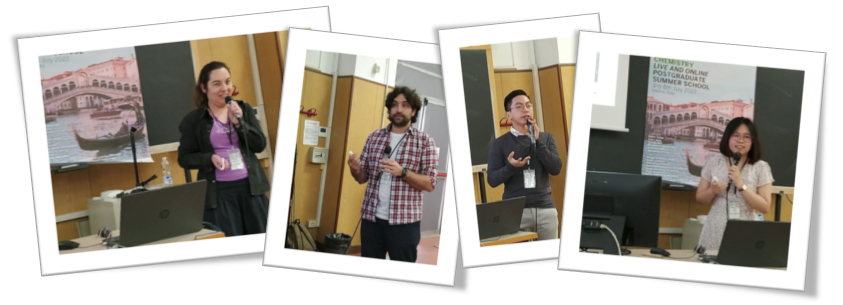
Five Award Winners of the Best Online Poster Presentations presented their research works to teachers, online and in-person participants in the following order:
Daniela M. Sboiu from Instituto de Catalisis y Petroleoquímica, Spain, on “Bioplastics that grow on trees”
Domenic Pace from the School of Chemistry, University of New South Wales, Australia, on “Exploring Mechanisms in Iodine Catalysis”
Mahshid Nikravesh from the Department of Chemistry, Institute for Advanced Studies in Basic Sciences (IASBS), Iran, on “Ethanol as a Green Solvent for the Catalytic Applications of a Heterobimetallic Compound in Tandem Transformations”
Rini Larasati from Chemistry Department, Jenderal Soedirman University, Indonesia, on “Synthesis of Chitosan/Ag3PO4/PtCl62- as Photocatalyst for Methyl Orange Degradation”
Zikhona Tywabi-Ngeva from the Centre for Rubber and Material Science Research Unit, Department of Chemistry, Faculty of Science, Nelson Mandela University, Port Elizabeth, South Africa, “Formulation and Characterization of the Natural Fiber/Polymer Composites from Waste Pineapple Leaf Fibers”.
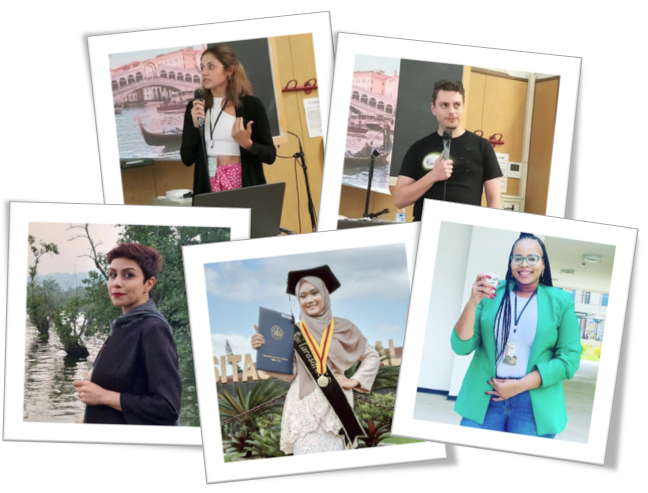
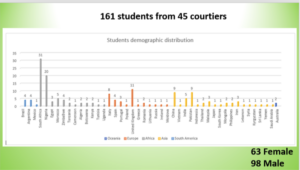 Dr. Aurelia Visa (one of the co-organizers of the Summer School) and Secretariat of the Summer School (Ms. Graziana Gigliuto and Ms. Alessandra Abbate) made two presentations showing the success of the 14th Green Chemistry Summer School 2022. On behalf of students, Ms. Lyvia Menezes from CAESB/University of Brasilia, Brazil, shared her experience and impressions about the Summer School 2022 and thanked all teachers for their insightful lecturers on Green Chemistry and students for sharing this wonderful and memorable moments together. Finally, the Summer School was officially closed by the remarks of Prof. Pietro Tundo (Chairman of the Summer School), thanking students for joining the Summer School and wishing them the best in their future careers in the area of Green Chemistry.
Dr. Aurelia Visa (one of the co-organizers of the Summer School) and Secretariat of the Summer School (Ms. Graziana Gigliuto and Ms. Alessandra Abbate) made two presentations showing the success of the 14th Green Chemistry Summer School 2022. On behalf of students, Ms. Lyvia Menezes from CAESB/University of Brasilia, Brazil, shared her experience and impressions about the Summer School 2022 and thanked all teachers for their insightful lecturers on Green Chemistry and students for sharing this wonderful and memorable moments together. Finally, the Summer School was officially closed by the remarks of Prof. Pietro Tundo (Chairman of the Summer School), thanking students for joining the Summer School and wishing them the best in their future careers in the area of Green Chemistry.
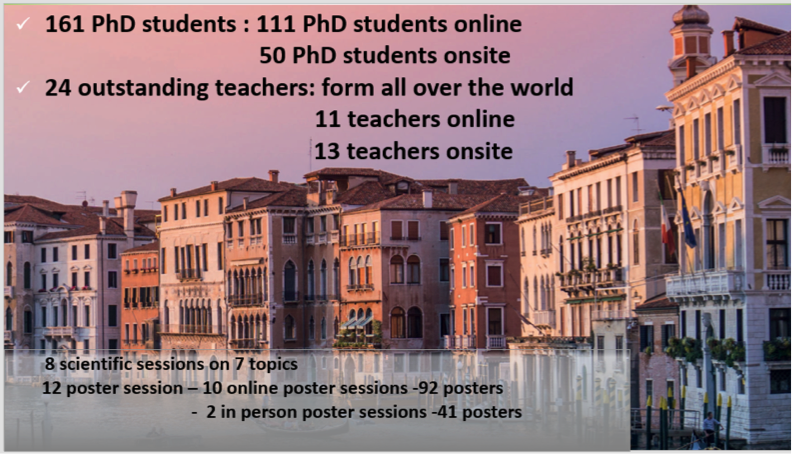
See YOU next year!
First post 5 July 2022; last update 15 July 2022
